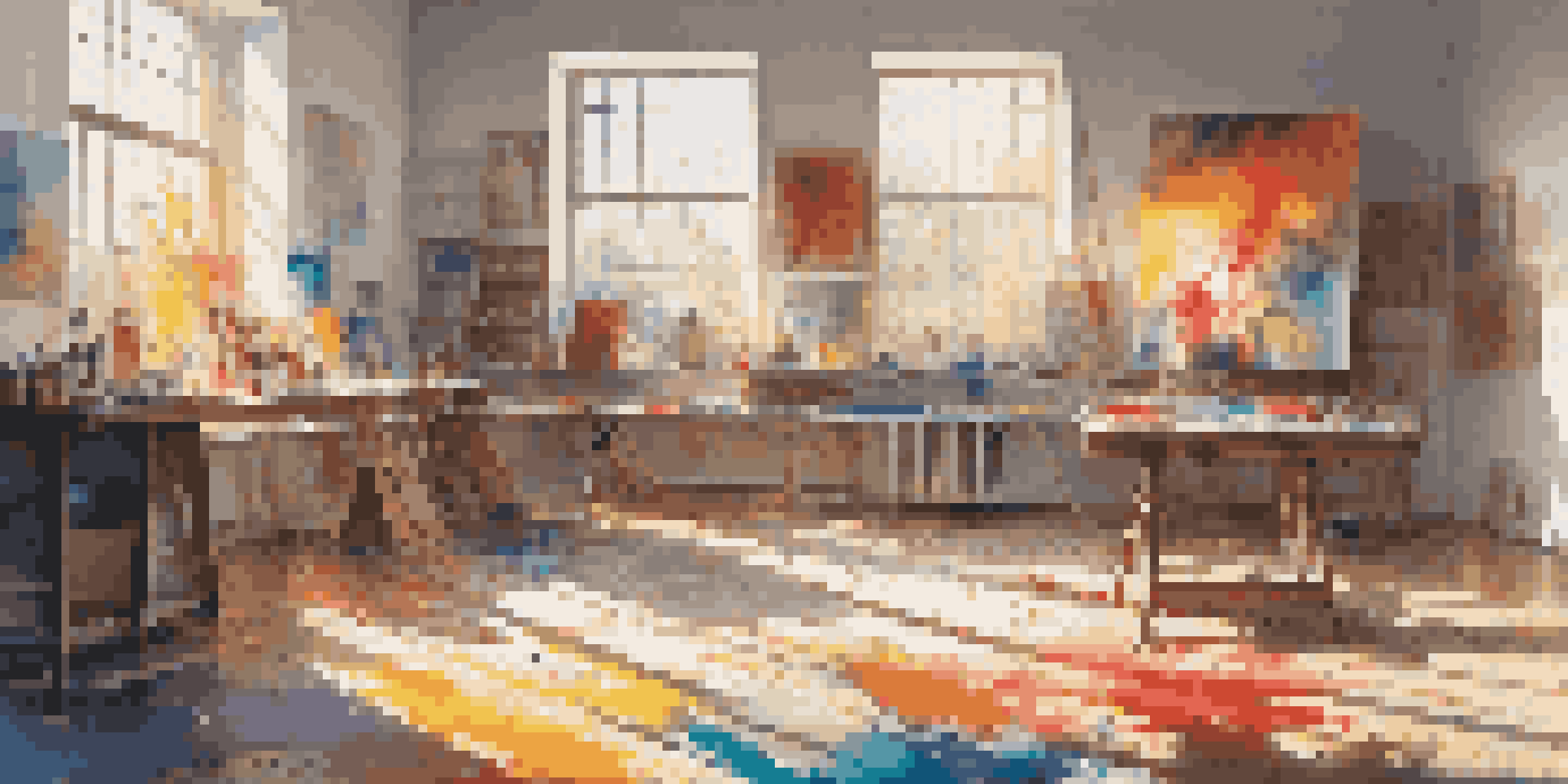The Role of Spontaneity and Play in Artistic Innovation

Understanding Spontaneity in Art Creation
Spontaneity in art refers to the ability to create without strict planning, allowing ideas to flow freely. This organic approach often leads to unexpected outcomes, adding a layer of surprise and excitement to the artistic process. When artists embrace spontaneity, they open themselves up to new possibilities, enabling their imagination to take the lead. Think of it like jazz music, where improvisation often results in the most captivating performances.
The Role of Play in Artistic Expression
Play is a fundamental component of creativity, allowing artists to experiment without the fear of failure. Engaging in playful activities can lead to innovative ideas and fresh perspectives, much like how children learn through exploration. When artists engage in play, they often discover new techniques or styles that they may not have considered otherwise. This playful mindset fosters a sense of joy and curiosity, essential for artistic growth.
Embrace Spontaneity for Creativity
Allowing spontaneity in art fosters unexpected outcomes and nurtures the imagination.
Historical Examples of Spontaneity in Art
Throughout history, many renowned artists have embraced spontaneity to push the boundaries of their work. For instance, Jackson Pollock's drip paintings exemplify how letting go of control can lead to groundbreaking results. His method involved moving around the canvas and allowing paint to fall spontaneously, creating a dynamic sense of movement. Such examples illustrate that when artists trust their instincts, they can produce truly innovative art.
Playful Techniques to Enhance Creativity
Incorporating playful techniques into your artistic practice can unlock new levels of creativity. For example, doodling, brainstorming, or even engaging in creative games can stimulate the mind. These activities break down mental barriers and encourage a flow state, where ideas can emerge more naturally. By prioritizing play, artists can cultivate an environment conducive to experimentation and innovation.
Play Fuels Artistic Innovation
Engaging in playful activities encourages experimentation and can lead to fresh artistic perspectives.
The Balance Between Structure and Freedom
While spontaneity and play are crucial, finding a balance with structure can enhance the creative process. Artists often benefit from having some guidelines or frameworks to work within, allowing for both freedom and direction. This balance ensures that while they can explore and experiment, they also have a roadmap to guide their artistic endeavors. Just as a seasoned chef knows when to follow a recipe and when to improvise, artists must navigate this dynamic tension.
Overcoming Fear of Failure in Creativity
Fear of failure can stifle creativity and inhibit spontaneity, making it essential for artists to address this fear. By reframing failure as a learning opportunity, artists can cultivate a more playful and open mindset. This shift allows them to take risks and explore uncharted territories in their work. Remember, some of the greatest innovations often arise from mistakes or unexpected turns.
Balance Structure and Freedom
Finding a balance between structured guidelines and creative freedom enhances the artistic process.
Collaboration as a Catalyst for Playfulness
Collaboration can significantly enhance spontaneity and play in the artistic process. Working with others introduces new ideas and perspectives, creating an environment ripe for creative exploration. When artists collaborate, they often find themselves engaging in playful exchanges that lead to innovative outcomes. This collective energy can spark inspiration and encourage risk-taking, pushing the boundaries of what's possible.
Embracing Spontaneity and Play in Daily Practice
To harness the power of spontaneity and play, artists should incorporate these elements into their daily practices. Setting aside time for unstructured exploration can lead to unexpected breakthroughs and fresh ideas. Whether through sketching, journaling, or simply daydreaming, these moments of play can invigorate the creative spirit. By making spontaneity and play a priority, artists can continually nurture their innovation and artistic expression.